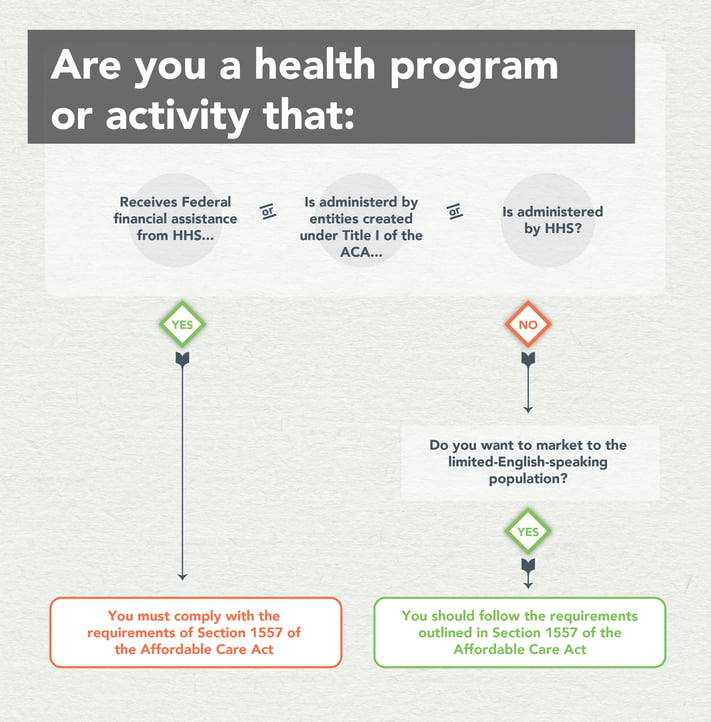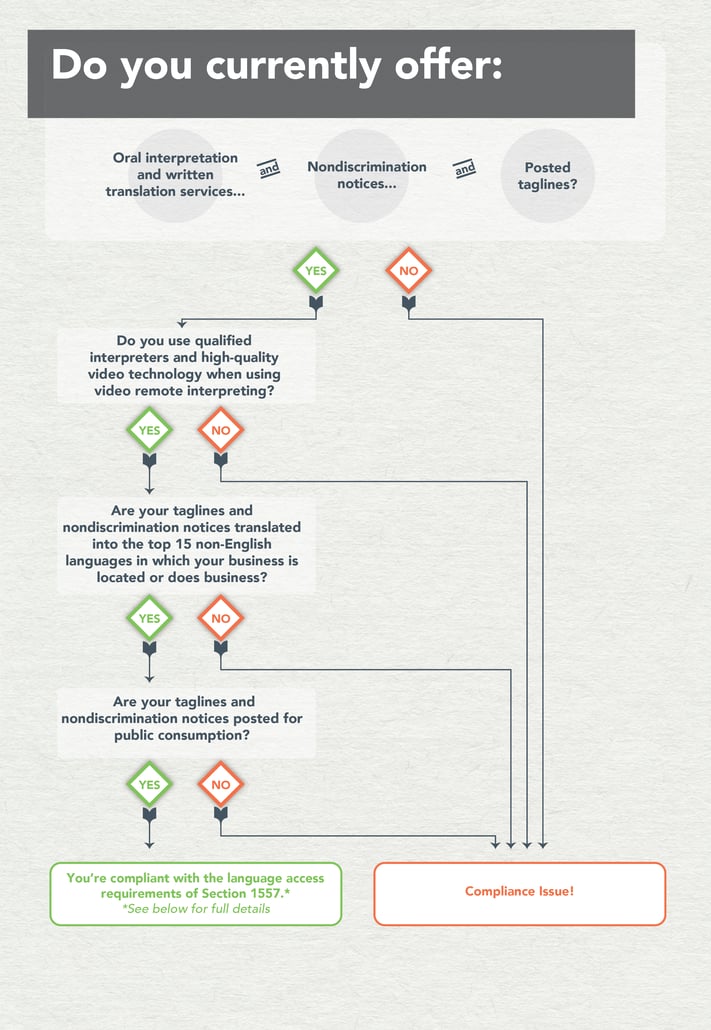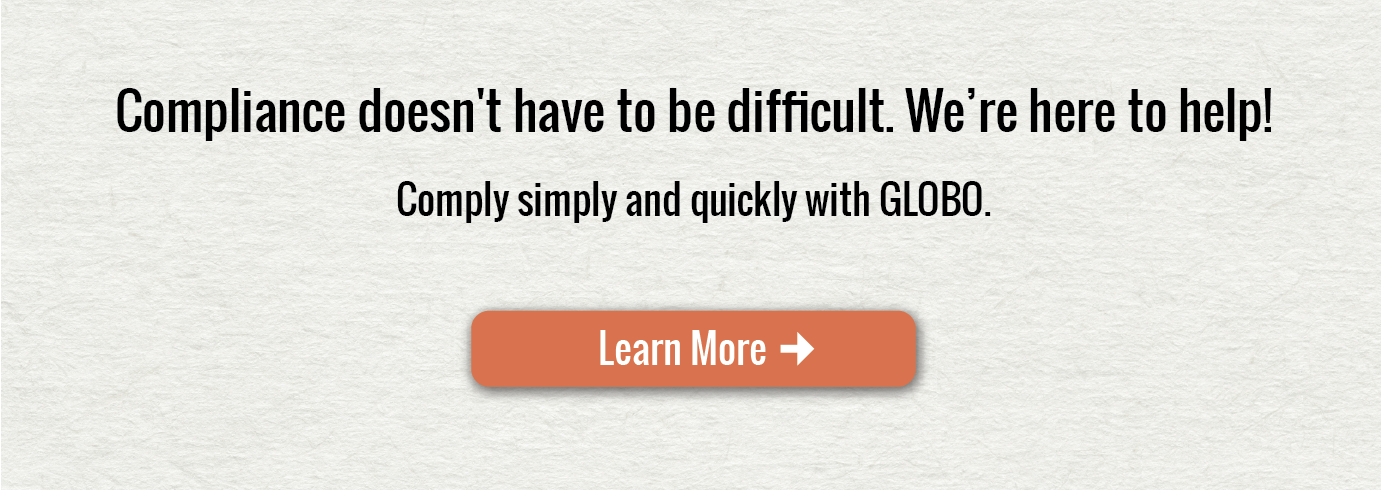The final ruling of Section 1557 of the Affordable Care Act (ACA) put major changes in motion regarding individuals’ ability to access health care and coverage. The law prohibits discrimination based on age, sex, disability, race, color and national origin, which includes the language an individual speaks.
The enhancement of language assistance for individuals classified as Limited English Proficient (those who speak English less than "very well”) is just one piece of the puzzle in the law's efforts to reduce disparities in healthcare. Since the final rule was implemented, language services have been a hot topic for many health insurers and providers. However, the rule, which is extensively outlined in a whopping 99-page document, isn’t entirely easy to digest.
Questions such as ‘Does Section 1557 affect me?’ and ‘How do I comply with the language access requirements?’ often arise. To help make sense of the law (and answer these questions), we’re breaking down exactly who the law affects, and how those affected can become compliant with the language access requirements, with two simple flowcharts:
Do I need to comply with Section 1557 of the Affordable Care Act?

Are you a health program or activity that:
- Receives Federal financial assistance from the Department of Health and Human Services (HHS)?
Health programs and activities include health care providers (such as hospitals, health clinics, physicians’ practices, community health centers, nursing homes, rehabilitation facilities), health plans and health insurance insurers.
Examples of Federal financial assistance include grants, tax credits, property, Medicaid and Medicare Part A, C and D payments (Medicare Part B is excluded).
- Is administered by entities created under Title I of the ACA?
Examples of entities created under Title I of the ACA include the State-based and Federally-facilitated health insurance marketplaces.
- Is administered by HHS?
Health programs and activities administered by HHS include Medicare and the Federally-facilitated health insurance marketplaces.
If you answered "Yes" to any of the questions above:
You must comply with Section 1557. Continue reading to find out what you need to ensure compliance with the language assistance requirements of Section 1557.
If you answered "No" to all of the questions above:
While you may not be required to comply with Section 1557, providing language services is still worth considering: Limited-English speakers are among the fastest-growing segment of the U.S. population, and by providing language access to these individuals, your business could see massive growth.
Am I compliant with the language access requirements of Section 1557?

Do you currently offer:
- Oral interpretation and written translation services?
To ensure limited-English speakers have "meaningful access" to care and coverage, covered entities must offer language assistance, such as interpreting and translation services, at no cost to the individual and in a timely manner.
- Translated nondiscrimination notices?
Covered entities must post a nondiscrimination notice in at least English, but are encouraged to post the full 15 nondiscrimination notices translated into the top 15 non-English languages spoken in the State in which the entity is located or does business. Nondiscrimination notices advise individuals with limited English proficiency of their civil rights, while also providing information about language assistance available to them.
- Translated taglines?
Covered entities are required to post translated taglines in the top 15 non-English languages spoken in the State in which the entity is located or does business. Taglines indicate the availability of language services at no cost to the individual.
If you answered "Yes" to all of the questions above:
Keep up the good work - you've implemented the three most vital requirements of the language assistance provisions of Section 1557! But, continue reading to learn more about the specifics behind the language access requirements to ensure you're fully compliant.
If you answered "No" to any of the questions above:
You have a compliance issue. As of July 18, 2016 all covered entities are required to offer language assistance services, such as oral interpretation and written translation. And, the deadline for complying with the requirements for translated nondiscrimination notices and taglines just passed on October 16, 2016.
How do I comply with the language access requirements of Section 1557?
Here’s what you need in order to fully comply with the language access requirements of Section 1557 and better support your Limited English Proficient population:
- Team up with a language services company who can provide you with oral interpretation and written translation services to support your limited-English speakers.
- Use interpreters and translators that meet the new quality standards outlined in the final rule, which raise the legal standard from "competent" to "qualified."
- You may not require a limited-English speaker to provide his or her own interpreter or rely on a limited-English-speaking individual's family member, minor child or friend to act as an interpreter. The use of unqualified bilingual staff members is strictly prohibited.
- When using video remote interpreting services to communicate with a limited-English speaker, you must provide high-quality video technology.
- Translate nondiscrimination notices and taglines into the top 15 non-English languages spoken in the State in which your business is located or does business. To help covered entities comply with these requirements, The Office for Civil Rights (OCR) published a list of the top 15 languages spoken in each state and U.S. territory.
- Post notices and taglines in physical locations (such as your office), on your accompanying website, in any critical documentation or in any other significant communications with the intent to be circulated publicly.
- If you have 15 or more employees you must have a grievance procedure and compliance coordinator in place.
- (Optional): A language access plan isn't required, but it is certainly encouraged.


